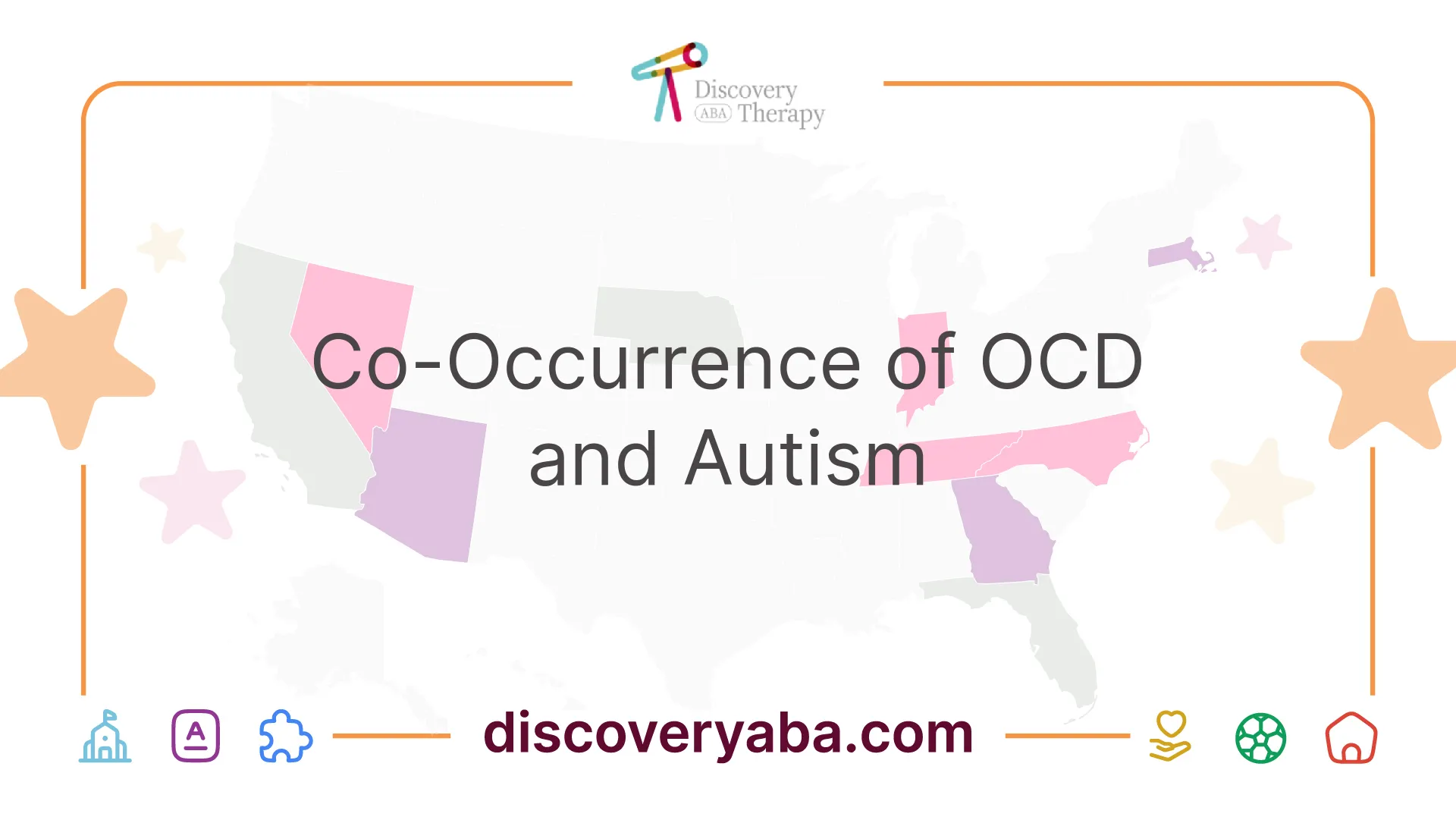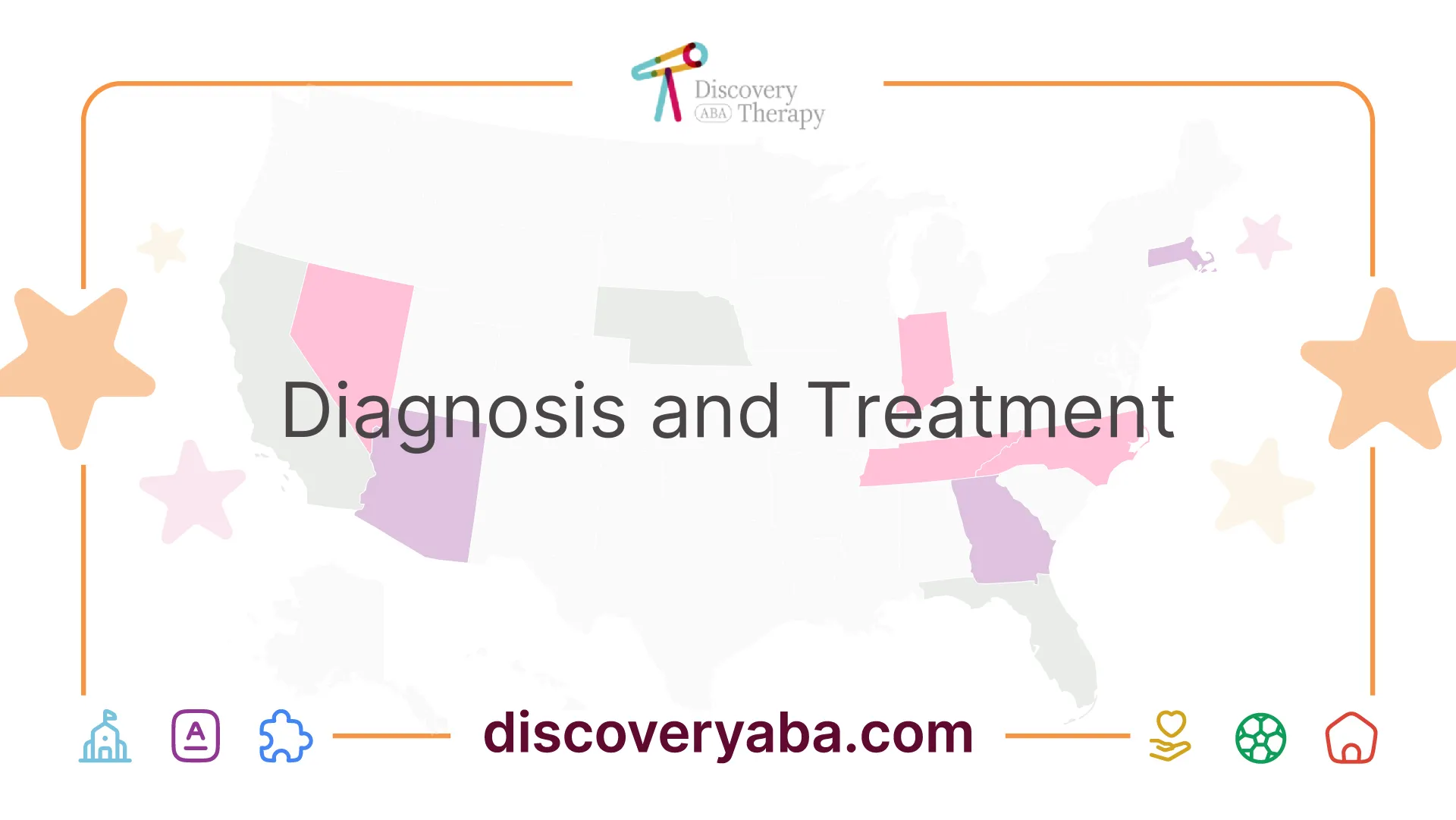ABA Therapy for OCD in Autism
Explore ABA therapy for OCD in autism, tailored treatments, and integrative approaches for effective support.


Understanding ABA Therapy
Applied Behavior Analysis (ABA) therapy has become a widely recognized intervention for individuals with Autism Spectrum Disorder (ASD). This approach focuses on understanding and modifying behavior through systematic observation, data collection, and intervention techniques. ABA therapy can be tailored for various needs, including addressing co-occurring conditions such as Obsessive-Compulsive Disorder (OCD).
ABA Therapy for Autism
ABA therapy is an effective treatment for Autism. Early intervention is key, as behavioral interventions help children with Autism learn social cues, improve communication, and develop crucial life skills. The structured nature of ABA allows therapists to create individualized plans that meet specific needs, ensuring compliance and enhancing daily functioning [1].
One common method in ABA therapy involves reinforcing positive behaviors while reducing undesired actions. Through techniques such as prompting, modeling, and shaping, therapists can help manage challenging behaviors often observed in children with Autism.
Benefits of ABA Therapy
The benefits of ABA therapy for individuals with Autism are numerous. Some of the primary advantages include:
BenefitDescriptionSkill DevelopmentABA therapy promotes the acquisition of new skills, such as communication, social interaction, and self-care.Behavioral ManagementIt helps address challenging behaviors, reducing instances of tantrums and aggression.Customized ApproachEach therapy plan is tailored to the individual, ensuring that specific needs are met effectively.Enhanced Parent InvolvementParents are trained to support and reinforce behavioral techniques at home, fostering a collaborative environment.Evidence-BasedABA practices are grounded in research, demonstrating effectiveness in improving outcomes for those with Autism.
Studies have shown that individuals with Autism who participate in ABA therapy often experience improved social skills and adaptive behaviors along with decreased anxiety and compulsive actions [1]. For those experiencing OCD symptoms, integrating ABA strategies can further enhance outcomes. For more information about combining ABA with other approaches to OCD, refer to our article on aba interventions for ocd in autism.
ABA therapy provides a robust foundation for addressing the unique challenges faced by individuals with Autism and OCD, making it a suitable intervention for parents and caregivers seeking effective support strategies.
Co-Occurrence of OCD and Autism

The intersection of Obsessive-Compulsive Disorder (OCD) and Autism Spectrum Disorder (ASD) is critical to understand for effective intervention, particularly in the context of ABA therapy for OCD in autism.
Prevalence of OCD in Autism
Studies have shown that OCD is notably prevalent among individuals with autism, with estimates indicating that between 4% to 17.4% of those with ASD meet the criteria for OCD. This rate is significantly higher than that found in the general population, highlighting a concerning trend in the dual diagnosis of these conditions.
StudyPrevalence Rate of OCD in AutismVarious Studies4% - 17.4%
The overlap between OCD and ASD can complicate the clinical picture, as the stereotyped and repetitive behaviors characteristic of ASD must be distinguished from the obsessive-compulsive acts associated with OCD. Understanding this distinction is essential for parents and caregivers to ensure appropriate therapy methods are employed.
Genetic Factors and OCD in Autism
The co-occurrence of OCD and autism can be attributed to a variety of factors, including genetic, neurobiological, and psychological components. A cohort study spanning from 1994 to 2012 revealed that individuals diagnosed with OCD had a significantly higher likelihood of also receiving a diagnosis of autism compared to those without OCD.
Additionally, individuals initially diagnosed with autism face a two-fold risk of later being diagnosed with OCD. Conversely, those first diagnosed with OCD show nearly a four-fold higher risk of being diagnosed with autism in their lifetime [3]. This bidirectional relationship underscores the importance of careful monitoring and early intervention strategies for both disorders.
By recognizing the prevalence and underlying genetic factors associated with OCD in individuals with autism, parents and caregivers can better advocate for effective treatment options, including behavioral therapy for OCD in autism and the specific adaptations required in ABA effectiveness for OCD in autism. Understanding the nuances surrounding this co-occurrence can significantly enhance treatment outcomes for affected individuals.
Diagnosis and Treatment

Diagnosing OCD in Autism
Diagnosing obsessive-compulsive disorder (OCD) in individuals with autism spectrum disorder (ASD) can be challenging. Symptoms of OCD may overlap significantly with some behaviors found in ASD, such as repetitive behaviors and rigidity. Consequently, distinguishing between the two requires careful observation and evaluation.
A comprehensive assessment typically involves interviews with parents, caregivers, or educators, along with standardized assessment tools that measure OCD symptoms. Professional clinicians may use checklists to identify compulsions and obsessions that are typical in OCD but not necessarily in autism. Understanding the intersection between OCD and autism is critical, as studies indicate shared genetic, neurobiological, and behavioral characteristics between the two conditions [4].
Key FeaturesOCDAutismPresence of intrusive, unwanted thoughtsYesNoRepetitive behaviors (compulsions)YesYes, but different motivationSocial communication difficultiesNoYes
Treatment Approaches
Effective treatment for OCD in individuals with autism often involves a combination of therapies, taking into account both conditions' complexities. One widely recognized approach is Cognitive-Behavioral Therapy (CBT), which can be modified to better suit individuals with unique needs posed by autism. Through modified CBT, individuals learn to recognize and reframe intrusive thoughts, face feared situations, and develop coping mechanisms to manage compulsive behaviors.
In addition to cognitive-behavioral strategies, aba therapy for ocd in autism plays an essential role. ABA interventions are designed to teach adaptive behaviors while reducing the intensity of compulsive behaviors. Caregivers are often involved in these therapies to reinforce strategies at home.
Integrative approaches may also involve medications to help manage severe OCD symptoms in conjunction with behavioral therapies. Collaborating with healthcare professionals can provide tailored treatment plans combining medication and therapeutic methods, ensuring that the needs of the individual are met holistically.
Treatment MethodDescriptionCognitive-Behavioral Therapy (CBT)Focuses on recognizing intrusive thoughts and developing coping mechanisms.ABA TherapyUtilizes behavioral techniques to reduce compulsive behaviors and teach adaptive skills.MedicationsMay include SSRIs or other medications aimed at managing OCD symptoms.
Peer support groups and social skills training can also be beneficial. These environments allow individuals to practice social interactions while addressing anxiety that may arise due to both autism and OCD.
Both treatment and diagnosis should be approached with a comprehensive understanding of the individual's unique experiences with autism and OCD, ensuring they receive the most effective care tailored to their needs.
ABA Therapy for OCD in Autism
Applied Behavior Analysis (ABA) therapy can be effectively tailored to manage obsessive-compulsive disorder (OCD) in individuals with autism. This section highlights the customization of ABA for OCD and strategies for managing compulsions.
Tailoring ABA for OCD
ABA therapy is a cornerstone in the treatment of autism and can be adapted to address OCD-related behaviors. By focusing on the specific needs of the individual, ABA can modify behavior patterns associated with OCD. This therapy, when personalized, utilizes various techniques to diminish obsessions and compulsions while promoting healthy behavioral responses.
A customized ABA plan may include:
Tailored ABA strategies can be essential for encouraging engagement and cooperation in individuals with autism, enhancing the effectiveness of OCD interventions. For more information, see our article on aba interventions for ocd in autism.
Managing Compulsions with ABA
Managing compulsions through ABA involves systematically addressing and reducing these behaviors. Strategies may include:
ABA has been recognized for its effectiveness in treating various psychological conditions, including OCD in individuals with autism. By focusing on behavioral activation, ABA addresses the underlying behavioral patterns of OCD, promoting healthier outcomes. For further exploration of ABA's effectiveness, visit our article on aba effectiveness for ocd in autism.
By combining the principles of ABA therapy with a thoughtful approach to OCD management, caregivers can help individuals with autism navigate their symptoms more effectively and improve overall quality of life. Understanding these methods equips parents and caregivers with the knowledge to support their loved ones actively.
Integrative Approaches
Integrative approaches to treating OCD in individuals with autism are essential for comprehensive care. These methods often combine medication, therapy, and occupational therapy to address the multifaceted challenges faced by these individuals.
Medication and Therapy
Medication can be an effective component in managing the symptoms of both autism and OCD. Selective serotonin reuptake inhibitors (SSRIs) are often prescribed to alleviate anxiety and obsessive thoughts associated with OCD [1]. This pharmacological approach is frequently paired with therapy for optimal results. Combining medication with ABA therapy for OCD in autism allows individuals to learn coping strategies while receiving symptom relief from medication.
Here’s a summary of the medication approach:
Medication TypePurposeExample MedicationsSSRIsReduce anxiety and obsessive thoughtsFluoxetine, Sertraline
Occupational Therapy for Sensory Integration
Occupational therapy (OT) plays a significant role in addressing sensory integration issues that may worsen OCD symptoms in individuals with autism. Through OT, strategies are implemented to enhance sensory processing, leading to a reduction in stress and anxiety. This can ultimately diminish the severity of OCD compulsions. Techniques might include exposure to various sensory experiences and activities designed to improve emotional regulation and coping mechanisms [5].
Utilizing OT in conjunction with behavioral therapy for OCD in autism can create a holistic treatment plan. These interventions benefit from regular communication among care providers, ensuring that every aspect of the individual's care is aligned.
In summary, effective treatment often requires a cohesive support strategy involving various professionals, including therapists, psychiatrists, and occupational therapists. This team approach helps to address both therapeutic and sensory needs comprehensively. By integrating these approaches, parents and caregivers can better support individuals with autism who are also facing the challenges of OCD.
Support and Training
Support and training are crucial components for parents and caregivers of individuals with autism who are also dealing with obsessive-compulsive disorder (OCD). These resources can help improve social skills and provide valuable community connections.
Peer Support Groups
Peer support groups offer an essential space for families and individuals facing similar challenges. These groups can provide emotional support, shared experiences, and practical advice related to both autism and OCD. They can also create a sense of community, helping individuals and families feel less isolated.
Peer support groups tailored for autism and OCD can address specific social learning differences and the social anxiety that often accompanies OCD [5]. Through participation, parents and caregivers can learn coping strategies and gain insights from others who have faced similar situations.
Social Skills Training
Social skills training can be beneficial for individuals with autism, especially when it comes to understanding and engaging in social norms and cues. This form of training helps individuals practice essential social interactions, which may also alleviate anxiety associated with OCD.
The training typically focuses on:
The skills developed through training can indirectly impact OCD symptoms by promoting feelings of belonging and acceptance [7].
For parents, incorporating these support systems can offer significant benefits for their children and families. Additional resources and information on ABA interventions for OCD in autism may further assist in understanding how these approaches can work in tandem with peer support and social skills training.
Does Your Child Have An Autism Diagnosis?
Learn More About How ABA Therapy Can Help
Find More Articles
Contact us
North Carolina, Nevada, Utah, Virginia
New Hampshire, Maine
Arizona, Colorado, Georgia, New Mexico, Oklahoma, Texas
.avif)




































































































